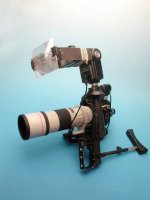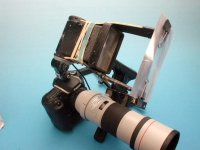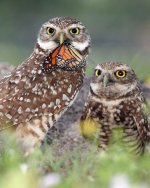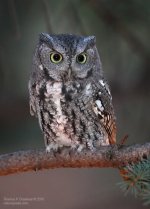Keith Reeder
Watch the birdie...
Yep, you want to keep shutter speed up, even with IS.
There's no hard and fast rule about this. If you've got good handholding technique, 1/200 might be plenty for consistent sharpness on (say) perched birds), but as a matter of principle, higher shutter speeds always improve your chances.
There are two "official" shutter speed rules of thumb. The first, "traditional" formula is:
1/focal length - so with a 400mm lens you would aim for a shutter speed of at least 1/400,
But some people argue that the "crop factor" should be taken into account, in which case the formula should be:
1/(focal length * 1.6) - which would indicate a shutter speed of 1/640 for the same 400mm lens.
Neither are cast in stone though. As I say, good technique and/or a stable platform can significantly mitigate the risk of a low shutter speed.
There's no hard and fast rule about this. If you've got good handholding technique, 1/200 might be plenty for consistent sharpness on (say) perched birds), but as a matter of principle, higher shutter speeds always improve your chances.
There are two "official" shutter speed rules of thumb. The first, "traditional" formula is:
1/focal length - so with a 400mm lens you would aim for a shutter speed of at least 1/400,
But some people argue that the "crop factor" should be taken into account, in which case the formula should be:
1/(focal length * 1.6) - which would indicate a shutter speed of 1/640 for the same 400mm lens.
Neither are cast in stone though. As I say, good technique and/or a stable platform can significantly mitigate the risk of a low shutter speed.








